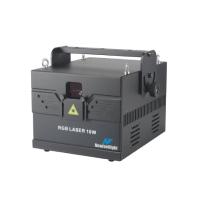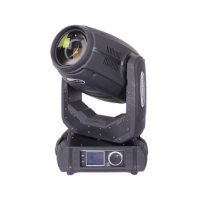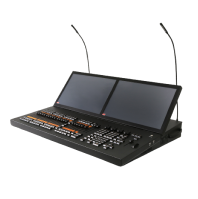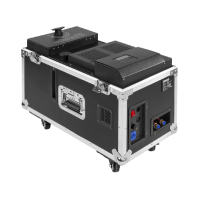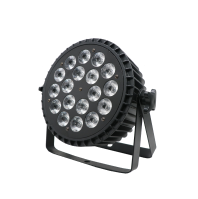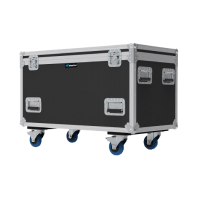Table of Contents
- The Meaning of Laser and Its Origins
- How Laser Light Is Produced
- Laser Physics and Coherence
- What Lasers Are Made Of
- How Lasers Work in Real Applications
- How Lasers Are Made and Controlled
- Why Understanding Laser Fundamentals Matters
- Newfeel Light and the Future of Laser Systems
- Conclusion: The Art and Science of Light
In the professional lighting industry, lasers have evolved from niche stage tools into essential components of large-scale visual design. Whether it’s for outdoor mapping, concert tours, or permanent installations, knowing how lasers work allows lighting companies and production professionals to choose the right technology, achieve better control, and create more impactful shows.
At
Newfeel Light, we design advanced lasersystems that bring together precision optics, reliable hardware, and cutting-edge software control. But before investing in a high-performance laser, it’s worth understanding the fundamentals of how does a laser work—from its physics to its production.
The Meaning of Laser and Its Origins
The word laser is actually an acronym for Light Amplification by Stimulated Emission of Radiation. This name perfectly captures its function. A laser is not an ordinary light source—it’s a highly focused, coherent laser beam light created through controlled atomic interactions.
In simple terms, lasers take advantage of laser physics, where energy is introduced into atoms, exciting their electrons to higher orbits around the nucleus. When these electrons return to their lower energy states, they release energy in the form of photons—tiny particles of light. Through a precise process of amplification, those photons multiply and align in perfect synchronization, producing the sharp, directional beam that defines how lasers work.
How Laser Light Is Produced
To truly understand how is laser light produced, we must look inside the structure of a laser itself. Every lasersystem contains three main components: an energy source, a gain medium, and an optical resonator.
The energy source—often electricity or another light—stimulates the atoms in the gain medium, which can be a gas, crystal, or semiconductor. This stimulation pushes electrons into an excited state, setting the stage for stimulated emission. When these excited electrons drop back down to their original levels, they emit photons that are identical in every way: same wavelength, same direction, and same phase.
These photons are then reflected back and forth between two mirrors inside the resonator cavity, amplifying exponentially with each pass. Eventually, a fraction of that concentrated light escapes through a semi-transparent mirror, forming the highly controlled, monochromatic laser beam. This is the essential laser working principle—the transformation of atomic energy into pure, amplified light.
Laser Physics and Coherence
The real magic of how laser produced light differs from regular illumination lies in coherence. Ordinary light, like that from a bulb, contains waves of many different wavelengths and directions. But a laser beam is coherent—its light waves are all in perfect alignment. This means the energy of the beam remains concentrated even over long distances.
Because of this coherence, lasers maintain exceptional directionality and brightness, making them ideal for professional applications. A properly focused laser beam light can stay sharp across hundreds of meters or even project clean patterns onto skyscrapers, concert stages, and landscapes.
This unique optical behavior is what gives professional laser lights such precision, whether used in entertainment, engineering, or visual arts.
What Lasers Are Made Of
If you’ve ever wondered what are lasers made of or what are lasers made out of, the answer depends on their design and purpose. Gas-based lasers, like helium-neon or CO₂ types, use different atomic gases inside the gain medium to produce specific wavelengths. Solid-state lasers, such as Nd:YAG, use crystal materials. Meanwhile, diode lasers rely on semiconductor materials similar to those found in LEDs, offering compact size and efficiency.
These materials determine not only the color and wavelength but also the beam’s stability and performance. At Newfeel Light, we use precise laser production methods that ensure high color purity and long operational lifespan—essential for professionals who rely on consistency during long events or outdoor shows.
How Lasers Work in Real Applications
Understanding how do lasers work helps explain why they’re used in so many industries. In stage production, for example, lasers are used to create sweeping beams, dynamic animations, and synchronized effects that move perfectly in time with music. Their precision and coherence allow them to be controlled through advanced protocols such as DMX, ILDA, or FB4, giving designers complete creative flexibility.
In architectural projection, outdoor laser light systems are used to display vivid patterns and text on buildings, while in theme parks and immersive attractions, large-scale laser beams create atmospheric tunnels and 3D illusions. Corporate events and branding campaigns also use laser beam light technology to project logos and messages in stunning clarity.
Beyond entertainment, lasers are applied in medicine, communications, and even construction. Their versatility comes from the same physical foundation—coherent light produced through atomic stimulation.
How Lasers Are Made and Controlled
From a manufacturing perspective, how lasers are made involves both physics and engineering precision. Each component must be aligned within micrometers to maintain beam coherence. The optical cavity mirrors, for instance, must be positioned so that photons reflect in a consistent path, creating stable amplification.
Modern laser production integrates computer-aided calibration systems to fine-tune every laser module. This ensures that professional lasers maintain consistent wavelength output, minimal divergence, and optimal brightness. For event professionals, this translates into beams that stay sharp, colors that stay pure, and systems that perform reliably under demanding conditions.
Once built, these lasers are operated using intelligent control systems. DMX and ILDA protocols manage lighting synchronization, while FB4 and network-based platforms allow real-time programming of laser shows. This integration of laser physics and digital control makes it possible to craft complex, multi-layered visual performances.
Why Understanding Laser Fundamentals Matters
Knowing how laser produced light functions at a scientific level gives lighting professionals a major advantage. It allows them to better predict system behavior, troubleshoot alignment issues, and select the most efficient and safe configurations for their projects.
For instance, understanding coherence helps explain why laser beams need precise optical alignment to avoid distortion, while familiarity with laser physics clarifies why certain wavelengths perform better outdoors than others.
This knowledge also helps buyers evaluate specifications more effectively—beam divergence, wavelength stability, and scanning performance aren’t just technical jargon; they’re the qualities that define a truly professional lasersystem.
Newfeel Light and the Future of Laser Systems
At Newfeel Light, we merge advanced laser production technology with practical design for lighting companies and event producers worldwide. Our RGB laser projectors combine precision optics with rugged build quality and software compatibility. From waterproof outdoor laser lights for festivals to high-speed scanning systems for concerts, we build products that align with the most demanding professional standards.
Each laser undergoes detailed calibration and testing to ensure consistent output, safe operation, and easy integration into multi-device setups. Our goal is simple: to turn complex laser physics into reliable, creative tools that empower lighting designers everywhere.
Conclusion: The Art and Science of Light
So, how does a laser work in essence? It begins at the atomic level, where energy transforms into coherent light, and ends in the dazzling beams that define modern stage and architectural lighting. Understanding how lasers work and how are lasers made isn’t just a matter of science—it’s the key to mastering visual storytelling in professional environments.
From quantum mechanics to creative design, lasers embody both precision and imagination. At Newfeel Light, we take pride in building technology that bridges that gap—turning physics into performance and light into art.






